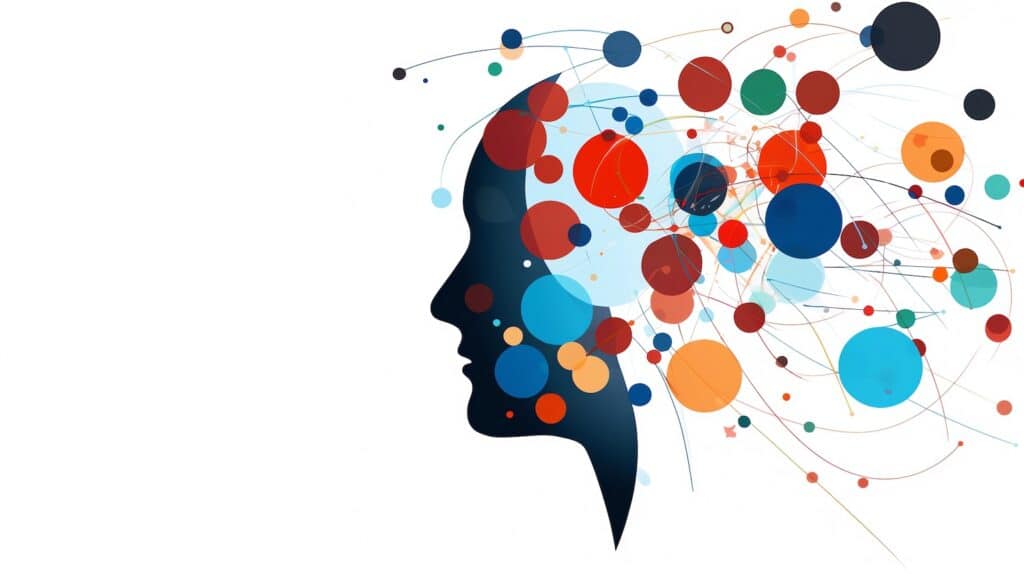Obsessive-compulsive disorder (OCD) is frequently misdiagnosed, yet severely disabling if left untreated. Inaccurate media portrayals of OCD have led to widespread misinformation about the condition, including its symptoms, effects, related conditions, and potential treatments. As more research and information about OCD have appeared in recent years, our understanding of the disorder—and its different manifestations—has expanded, too.
In the 4th edition of the Diagnostic and Statistical Manual of Mental Disorders (DSM-IV, 1994), OCD was classified as an anxiety disorder. In the 5th edition, published in 2013, it was given its own category: obsessive-compulsive and related disorders. Within that category are several distinct conditions with their own symptoms and diagnostic criteria.
Let’s explore the most common subtypes and related conditions of OCD.
What is Obsessive Compulsive Disorder?
Obsessive-compulsive disorder is a chronic mental health disorder that causes obsessive thoughts, compulsive behaviors, or both.
- Obsessions: Recurring, unwanted, intrusive thoughts or ideas; these can include thoughts of self-harm, fear of violence, sexual assault, or injury to other people, fear of germs or contamination, or fear of losing control of oneself
- Compulsions: Repetitive behaviors, rituals, or routines; people with OCD feel an intense drive to perform particular behaviors (hand washing, counting, repeating phrases, checking things) to combat the anxiety and fear caused by their obsessions
Typically, individuals diagnosed with OCD spend more than one hour per day engaged in obsessive thoughts and/or compulsive behaviors. Their thoughts and behaviors cause them significant distress and prevent them from functioning normally at home, work, school, or social settings.
Although no one knows exactly what causes OCD, current research suggests that differences in brain structure and genetics may each play a role. An estimated 2.3% of the population in the United States, or about 1 in 40 adults, has some form of the disorder. The symptoms and effects of OCD range from mild to severely debilitating, and the condition often gets worse when left untreated.
Symptom Subtypes of OCD
While there are no defined types of OCD (as there are with anxiety disorders, for instance), OCD symptoms can be grouped into categories that have distinct obsessions or compulsions.
These are the most common subtypes of OCD.
Cleaning/Washing
- Characterized by repetitive hand-washing, showering, cleaning, disinfecting, refusing to touch certain surfaces or objects, or avoiding places believed to be unclean or contaminated.
- Cleaning compulsions are often accompanied by obsessive thoughts of contamination, uncleanliness, or the threat of germs or illness.
Checking
- Characterized by repetitive checking of objects to ensure personal safety and the safety of others. Examples include checking locks on windows and doors, checking burglar alarms and fire alarms, and making sure stove burners, ovens, and other electrical appliances are turned off.
- People with checking compulsions may seek constant reassurance from others that objects are safe and/or functioning properly.
- Checking and counting compulsions are often intertwined, with many people needing to check objects a certain number of times before they feel safe.
Counting
- Characterized by compulsive, ritualistic counting of people, objects, or behaviors. A person with a counting compulsion may need to take an exact number of steps to go to the bathroom or leave their house or require a specific number of items on their desk before they can start the workday
Orderliness/Symmetry
- Characterized by a compulsive need to arrange, position, and align things. A person with this compulsion may experience intense discomfort or anxiety if their surroundings aren’t perfectly symmetrical or arranged in certain patterns.
Unacceptable/Taboo Thoughts
- Characterized by repetitive, intrusive, and unacceptable thoughts; these typically involve aggression or violence, religious blasphemy, unwanted or abnormal sexual behaviors, or health concerns.
- Obsessive taboo thoughts are often accompanied by compulsive mental rumination, reassurance seeking, and avoidance of certain places or situations.
Relationship OCD (R-OCD)
- Characterized by obsessive fears and/or doubts about personal relationships, typically romantic partnerships.
- A person with R-OCD may experience repetitive intrusive thoughts about the health, stability, and longevity of their romantic relationship or about their specific partner’s qualities and characteristics. These obsessive thoughts lead to intense anxiety and fear and place significant stress on their relationship.
- In response to their obsessive thoughts, a person with R-OCD may engage in repetitive behaviors like reassurance seeking, commitment avoidance, making relationship comparisons, and checking for signs of love, commitment, or attraction in their partner.
Conditions Related to OCD
The DSM-5 lists four distinct conditions under obsessive-compulsive and related disorders:
Body Dysmorphic Disorder
BDD is a mental health disorder characterized by intense preoccupation and fixation on perceived flaws in one’s physical appearance, leading to feelings of shame, anxiety, or embarrassment.
In response to their obsessive thoughts, people with BDD often engage in compulsive behaviors including:
- Weighing, measuring, photographing, or checking their bodies
- Spending hours on grooming
- Seeking constant reassurance about their appearance
- Undergoing numerous cosmetic procedures to fix perceived flaws
Trichotillomania
Trichotillomania (TTM) is a mental health disorder characterized by a compulsion to break or pull out one’s hair, most commonly from the head, eyebrows, eyelashes, or face. People with TTM experience intense, irresistible urges to hair pull and feel extreme discomfort or tension if they try to resist. TTM often leads to skin damage, pain and discomfort, and unsightly bald patches that cause embarrassment, shame, and social anxiety.
Hoarding Disorder
Hoarding disorder is characterized by a compulsive need to keep or “hoard” a large number of material items, even ones that have no use or monetary value. People with hoarding disorder typically acquire a range of items and rarely organize or catalog their possessions. Disorganization and clutter in the home are hallmarks of the condition.
People with hoarding disorder experience intense anxiety and distress when discarding or giving away their belongings. As a result, they often accumulate so many items that their homes become unusable and unsafe.
Excoriation (Skin-Picking) Disorder
Also known as dermatillomania, excoriation disorder is characterized by an uncontrollable, repetitive urge to pick at one’s own skin. The disorder often results in skin damage, open wounds, and scarring, leading to physical discomfort and shame. Severe skin picking may also result in infections that require medical treatment.
Treatment for OCD
Treatment is crucial for people whose OCD negatively impacts their mental well-being or ability to live independently. The fear and anxiety caused by the obsessions of OCD can be crippling; the compulsions are time-consuming and can cause severe impairment in daily functioning. Although there is no “cure” for OCD, recovery is possible through specialized treatment, often involving a combination of psychotherapy, medication, and holistic approaches to healing.
Cognitive behavioral therapy (CBT) is an evidence-based, research-backed treatment for OCD, typically involving cognitive therapy and exposure and ritual prevention (also known as exposure and response prevention or ERP). CBT helps people with OCD cope with their distressing thoughts and emotions and create strategies for managing their compulsive behaviors.
Many people with OCD are able to manage their symptoms with cognitive therapy and ERP. However, others may respond best to a combination of psychotherapy and medication. A class of antidepressant medications known as selective serotonin reuptake inhibitors (SSRIs) are considered the first-line drug treatment for OCD.
Lifeskills South Florida offers hope and healing for individuals living with obsessive-compulsive disorder. Our treatment programs provide individualized care for the complex symptoms of OCD, while also helping our clients build the skills they need to live fulfilling, productive, independent lives.
To find out more about our OCD treatment programs, call us at 954-953-1742 or submit an online contact form today.
References
1. National Institute of Mental Health. (2022) Obsessive-Compulsive Disorder.




